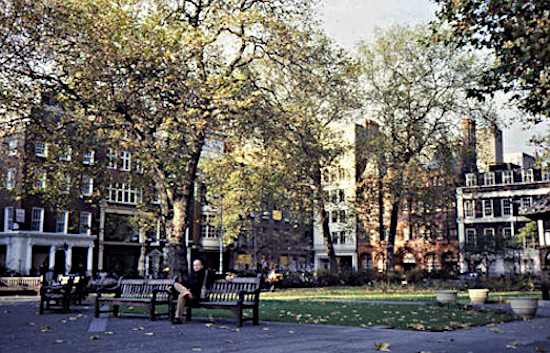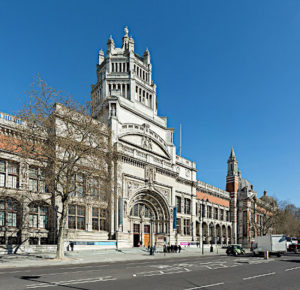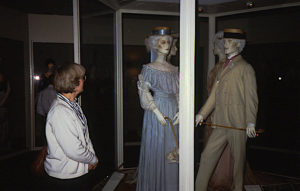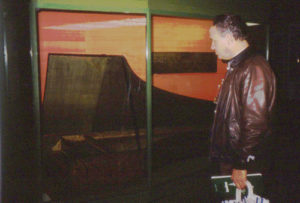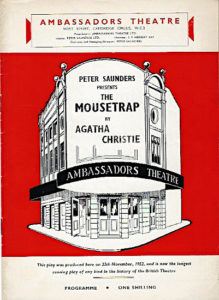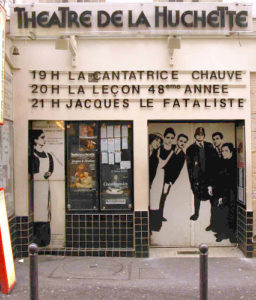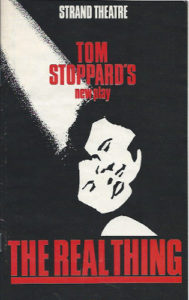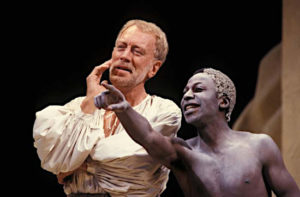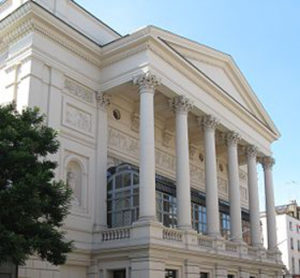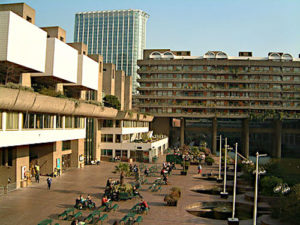During these thirteen years we traveled a lot, and among other places we went to, London a few times. And always in London we saw at least one play, we went to Selfridges’s in Oxford Street and we went to Foyle’s wonderful bookstore in Charing Cross Road where we walked down to the basement and looked over the wonderfully messy stacks of books which reminded us of the old bookstore, Barnes and Noble in New York City, where, in the old days, you could walk down to a somewhat less scruffy-looking basement and find the real treasures.
We went to Soho Square which neither of us knew of from previous separate visits. It doesn’t at all look downtrodden or filled with dubious-looking characters any more, just quiet and beautiful.
We visited the British Museum and its fabulous collection of stolen artifacts from former colonies, Egypt mainly. We bought some minor Kashmir scarves and things in the very specialized store across from the museum. We heard a group of mostly young people singing Christmas carols outside Saint Martin-in-the-Fields on Trafalgar Square. It was the end of November, it was cold and I was wearing a new Irish tweed suit from Selfridges. The singing was delightful and we have always wondered how it is that the British are such musical people and the French are not. This carol singing on a cold November day was a nice surprise.
In 1988 we finally got around to visiting the V&A (Victoria & Albert) Museum, the jewel of art and design in its magnificent building on Cromwell Gardens just south of Knightsbridge and Kensington Gardens. It is only a stone’s throw away from the Royal Albert Hall where I once went to a Promenade concert in 1955 with my dear friend Melville, who introduced me to London.
In the V& A Museum the very rooms are part of the art exhibit. If I ever saw anything vaguely like it, it would be Glyptoteket in Copenhagen, but this is on a far superior level with its enormous number of art objects and its splendor. Some works of art were donated to the V&A, others
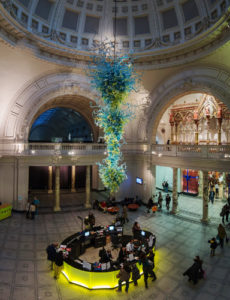
In 2000, an 11-metre high, blown glass chandelier by Dale Chihuly was installed at the V&A’s main entrance hall. Wikipedia
were of course bought with the money the British Empire stole from its colonies in all parts of the world, and which they certainly thought they had a perfectly legal and moral right to. The museum was founded in 1852. You will find art of all imaginable forms from various European countries, from India and from several other Asian countries.
We must have been seriously overwhelmed during our visit, because we don’t remember very much of what is in this magnificent museum. Surprisingly enough, we have only one picture from the interior and that is one of Victorian costumes. If we ever decide to go back to London one more time, I believe it would be to revisit the V&A Museum. We would take a couple of days for the museum alone and hopefully also get in a visit to a theater.
We met with one of our Swedish girls, now a guide in London, Katarina from Stockholm, the daughter of very close friends from my youth, Britt and Ingvar. We first saw her at the hotel where she had her guiding headquarters, which was far better than ours, which happened to be pretty much of a dump that time, even though the exterior looked fine. We also went to her home in a street called something ending in ‘Mews’ — such a cute street name. She worked as a guide in London, and she loved her job.
It ended after a year or two though. She got married to a nice man, Anders, and had Britt’s and ingvar’s first granddaughters, being the oldest one of three sisters. They now have seven grandchildren in all, of both sexes.
Now John being the one he is, it was a must to go to Simpson’s in the Strand for dinner. We went there at least twice, two different years. When John called to make a reservation, he wisely asked if tie was de rigueur. The answer was ‘Yes’. John of course had not brought a tie, so we found one at Simpsons in Old Bond Street. Funny coincidence, and I don’t think it’s the same Simpsons. Apparently the name of this men’s clothing store is Daks Simpsons, so the likeness in the names is just a coincidence.
The atmosphere at Simpson’s in the Strand is sober and low-keyed, not snobbish. No noisy Americans here.
Roast beef and Yorkshire pudding was the choice we made both times, since it just could not be more succulent than here. The noisy Americans might well be at the Savoy, which is right around the corner, but certainly very different. But, as a contrast, we also had delicious steak and kidney pie at Lyons in Fleet Street, which leads up to St Paul’s Cathedral. This was close to an area that I remember seeing still in rubble after the war in 1955, all around St. Paul’s there was nothing but rubble. I was amazed and shocked. Ten years after the end of the war London had not yet recovered, not by a long shot. Leicester Square was another shocking surprise where you could still see the ghastly destruction from the blitz during the war. Also, in 1955 Fleet Street was still the home of the big newspapers, The London Times, The Manchester Guardian, as it was called then, and many others.
London today is a glitzy place of theaters and museums galore, Piccadilly Circus has been very much changed and much of its great charm gone by the one-time eternal-seeming ‘Guiness Time’ neon sign with the enormous clock having been replaced by — what else, Mc Donald’s increasingly tasteless and domineering signs plus a multitude of IT signs. Even the Coca Cola sign is better than IT, in my opinion, since it was there as long ago as in 1955. We might well all be conservatives at heart.
For pictures of old London, see Chapter 8 – England, London
_____________________
I had been to concerts in London in 1955 with my dear friend Melville, who first introduced me to London, its very modern Festival Hall and the Royal Albert Hall right south of Kensington Gardens. I had seen plays in London before I got to London with John, even the immortal play “The Mousetrap” by Agatha Christie at Ambassadors Theatre, with one of my protégées, when we passed through London in 1966, a group
of thirteen young American girls and I, as their chaperone. “The Mousetrap”is still running today, but at a different theater, Since the opening in the 50s, it must be the children and grandchildren of the early audiences who are now seeing it. Amazing. I do believe it beats the most long-running performance in Paris, which is Ionesco’s “La cantatrice chauve” and “La leçon” at le Théâtre de la Huchette in le Quartier Latin. (“The Bald Soprano“ and “The Lesson“) Or doesn’t it beat Ionesco?
I quote from ‘Leçon de français‘ “What’s created the renown of this place is that for fifty years here we’ve been performing The Bald Soprano and The Lesson by Ionesco. It’s the world record for a consecutive run of the same show in the same place. Well, to begin with, the success was the success of a discovery. People came to listen to a new kind of humour. The Theatre of the Absurd, to begin with, surprised.” So it seems that Ionesco takes the price over old-fashioned Agatha Christie. I saw Ionesco’s performance around 1970 and even at that time it was a sensation, the way it seemed to have been running forever.
We, the entire group of young American girls, even saw the musical, “Oliver!”, all arranged by ‘Simpsons Travel Tours’ or rather its sister company in London who arranged our entire 8-week tour through Europe — for better or for worse.
“Oliver!”, a musical based on Dickens’s ‘Oliver Twist’, was seemingly a great success, but I found ti a very lackluster performance, as did in fact several reviewers, if I remember right.
However, now with John as my guide, theater in London has become a much more interesting thing.
I was back in the U.S. and my school at Mamaroneck after the one year in Paris when I had met John at a theater. Came Easter and I had nothing to do with myself. It was 1972 and it was getting close to Easter vacation. There was nobody in the U.S. I could go and see during my vacation. So I found a charter company (which I lived to regret, since they had gone bankrupt and closed down when it was time for me to go back to New York), and I called John to tell him I was coming.
We had a good time seeing all John’s Collège de France friends, Roberto among others. When it came time for my returning from London, John generously suggested accompanying me.
That got to be our first visit together to London. We saw “Jumpers“, a burlesque comedy with serious undertones by Tom Stoppard, and I don’t suppose we had much time for anything else. I am not sure if our first visit to Simpson’s in the Strand was in ’72 or rather in ’83, which was to become our second trip to London. That was after we had sold our fermette in l’Indre and it was after our big tour of the United States in 1979. But I do know that we have been at Simpson’s in the Strand on at least two occasions. Both times equally pleasant and delicious. We might go back one day and see how it has changed. After thirty years it simply can not have remained the same as the last century’s refined, low-toned gentleman’s-club-like restaurant.
‘Jumpers‘ by Tom Stoppard, a playwright I had not heard of before, was an exciting play and an excellently staged performance, lively and funny. It was on at the Old Vic Theatre on the south bank, right across the Westminster Bridge crossing the Thames from the Houses of Parliament.
In this play Tom Stoppard ridicules the field of academic philosophy, especially in its athletic version — in the person of George Moore, university professor of philosophy — and “likening it to a less-than skillful competitive gymnastics display.” (Wikipedia) In this more or less absurdist play, Stoppard also makes fun of the exercise-nut, Archie Jumper, Vice-Chancellor of George Moore’s university. To complete this whimsical story, a murder mystery is also added to this unconventional play. Stoppard shows us from a burlesque angle the collapse of a dysfunctional marriage. Dotty is George’s disturbed wife, played by Diana Rigg, the only actor I had ever heard of. I knew her as the smart and funny Emma Peel in ‘The Avengers‘, a pretty funny television series in the sixties that I often watched in New Rochelle.
Quote from Wikipedia:
“George Moore is a faded and slightly foolish philosophy professor employed at a university whose slick, exercise-mad Vice-Chancellor Archie Jumper forces a tumbling and leaping curriculum on the faculty.” (Wikipedia)
In the fall of 1983 we saw a second play by Tom Stoppard — “The Real Thing” at The Strand Theatre . We were somehow less impressed, but it got excellent reviews and it was, in spite of our personal opinions, a clear success. We just did not catch on to it.
In the fall of 1988 on our next visit to London we first saw ‘The Secret of Sherlock Holmes’, a play by Jeremy Paul, at the Wyndham Theatre. Sherlock Holmes was played by Jeremy Brett who later got to be the Sherlock Holmes to at least one generation as he played the part on television between 1984 and ’94.. It was great fun.
We also saw “The Tempest” at the Old Vic with Max von Sydow as Prospero in 1988. I was not terribly carried away by the play itself, even though I love Shakespeare, to read and to watch and to listen to (e.g. BBC excellent radio productions). However, what made this a very special evening, at least for me, was my idea to go backstage and talk to Max von Sydow. We managed this with a little white lie to the man (porter?) at the entrance. He asked if we were friends and I said “Yes”.
Max von Sydow came out of his dressing room just about finished with his de-make up and re-dressing. I said I was the daughter of Arne Lydén and I mentioned the beginning of Malmö Stadsteater with Sandro Malmquist and Arne Lydén. They were indeed the very beginning of the theater’s existence, even though there were also guest directors. Max von Sydow said with quite a bit of nostalgia that those were indeed the beginning of his love of theater. He lived not far from Malmö and he probably saw every play that was produced at the theater. He was 18 years old when the theater opened in 1944. I couldn’t get myself to say that it was a wonderful performance, and Max probably knew well that it was not, but I did say something positive about his acting. He is always a wonderful actor, always just right, the same as many of the other Ingmar Bergman actors. I made a mistake by speaking Swedish too much since John didn’t understand what we were saying, but he forgave me. It was fun speaking Swedish with Max von Sydow. He actually seemed to enjoy our little chat too and his little nostalgic trip back to Malmö Stadsteater. John nudged me so I did switch over to English finally.
How we managed to also go to the Covent Garden, the Royal Opera House, I am sure I don’t know, but we have definitely been there twice. The first time was the fun time, and I do think it must have been in 1983, even though for some reason I don’t have the program around here in the big red binders where I have saved all my programs.
We suddenly had the idea of trying to get tickets to Die Fledermaus by Johann Strauss II at the Covent Garden, where neither of us had ever been. It would have been in 1983. We got back to the Covent Garden in 1988 to see Boris Godunov by Mussorgsky — Robert Lloyd as the feared Boris and Eva Randovà as Marina.
However, for our last-minute idea of seeing die Fledermaus, the only seats we could get were up right under the roof, what we in French call ‘le poulailler’ — where the chickens roost at night. We knew the operetta well and even though we were sitting so very far from the stage we really enjoyed the show.
I had seen Die Fledermaus (Läderlappen) at the Stockholm Royal Opera in 1962 with wonderful Elsabeth Söderström as Frau von Eisenstein, the female lead. The New York Times wrote in 2009 in their obituary “the revered Swedish soprano”. She performed at the Met in the early sixties and then again in the eighties. The other leading Swedish soprano of that day was Maragreta Hallin whom I saw as Desdemona at Malmö Stadsteater in a guest performance by the Royal Opera in 1964. She was heavenly, but she never did perform internationally. It is said that she was inhibited by her lack of knowledge of English. Well, as Desdemona she was a dream. That was the same year I later moved to the United States.
Back to the Covent Garden and the poulaiiller. There is an amusing interlude where the main singers have fun showing off with a song from their own country. The hostess/soprano makes a joke about being from Ohio, which she clearly was. I don’t seem to have the program, but it would most likely have been Barbara Daniels Big laughter from the audience when she starts speaking English. And she sings an American song, I forget which one. It might well have been from Gershwin’s Porgy and Bess. It probably was. I don’t remember the other jokes, but there were of course several and the audience enjoyed it immensely.
In our recording at home Jussi Björling sings a German song, first in German and then in Swedish. A real ham. We had a fine time up in the poulailler. Also at the beginning of the party when the Emperor Franz Joseph calls to say that he can’t come, the princess/hostess says Hallo Josi, wie get’s dir? It’s of course hilarious to hear the hostess — even though a princess — treating the emperor as ‘du’ and calling him by a nickname — a fun little detail in the libretto.
Our vision was good back in those days, and our hearing too, and it was of course lucky that we knew the operetta well. From up high we came down a pretty small staircase, and since we wanted to see the foyer, we went around to the main entrance and saw Daniel Barenboim coming down the big fancy stairway with a couple of other men, his white silk scarf loosely arranged around his neck over his black evening coat. It was like getting inside a play, seeing these elegant gentlemen descending the marble stairway at the Covent Garden.
We had seen Daniel Barenboim once at the Philharmonic Hall at the Lincoln Center (renamed Avery Fisher Hall in 1973) doing a piano concerto, being both the pianist and the conductor, and we have always very much admired him as a conductor especially.
The Barbican Centre hosts classical and contemporary music concerts, theatre performances, film screenings and art exhibitions. It also houses a library, three restaurants, and a conservatory.
Amazing when I thought about how all of this was nothing but a huge spread of rubble on my first visit to London n 1955. Rubble all the way from St Paul’s to where the Barbican Centre was created
This magnificent cultural center was officially opened to the public by Queen Elizabeth II on 3 March 1982.
In the fall of 1988 we saw a Shakespeare performance at the Barbican. The problem is that, once again, we can not remember which one it was; After much searching and many eliminations we have concluded that it most likely was “Measure for Measure”.
Continued: Chapter 30 (Part 2): Travels from Paris — Berlin and more


